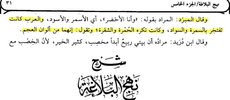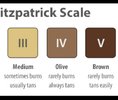techsamatar
I put Books to the Test of Life
In Classical Arabic there are several distinct ‘shades of blackness’ as noted by al-Tha‘labīb in his Fiqh al-lugha [82-82] Abyad/bayad is a particular shade or ‘type’ of blackness. According to the important Syrian hadith scholar and historian of Islam, Shāms al-Dīn al-Dhahabī in his Siyar a’lām al-nubalā’ [II:168]:
“When Arabs say, ‘so-and-so is white (abyad),’ they mean a golden brown complexion with a black appearance.”
Al-Dhahbi wrote:
إِنَّ العَرَبَ إِذَا قَالَتْ: فُلاَنٌ أَبْيَضُ، فَإِنَّهُمْ يُرِيْدُوْنَ الحِنْطِيَّ اللَّوْنِ بِحِلْيَةٍ سَوْدَاءَ، فَإِنْ كَانَ فِي لَوْنِ أَهْلِ الهِنْدِ، قَالُوا: أَسْمَرُ، وَآدَمُ، وَإِنْ كَانَ فِي سَوَادِ التِّكْرُوْرِ، قَالُوا: أَسْوَدُ وَكَذَا كُلُّ مَنْ غَلَبَ عَلَيْهِ السَّوَادُ، قَالُوا: أَسْوَدُ أَوْ شَدِيْدُ الأُدْمَةِ “When Arabs say; So and so is ‘abyad’, they mean a wheatish complexion with slight darkness (hintiy al-lawn bi-hilyatin sawda).





